When Julian Gollop announced that he was kickstarting a squad-based tactics game in the vein of his classic XCom games, fans of the genre, many old and many more new, immediately jumped to the crowdfunding page to help fund the game. I inexplicably heard about this late when the “Backer Only Alpha” released so jumped on the bandwagon a little late. Despite that I bought the game to get access to the Alphas and Betas and have not regretted it once.
While Gollop is best known for his work on the original XCom games, he has not ignored the advances and improvements that 2012’s XCom: Enemy Unknown brought to what has ultimately been the revival of the genre. Simply put Phoenix Point takes what was great about the Gollop led games (squad building and turn based action) and added in all the refinements and updates that the newer games bring to the table. But rather than merely being a reskin of Enemy Unknown and its sequels, Phoenix Point looks to bring something new to the table.
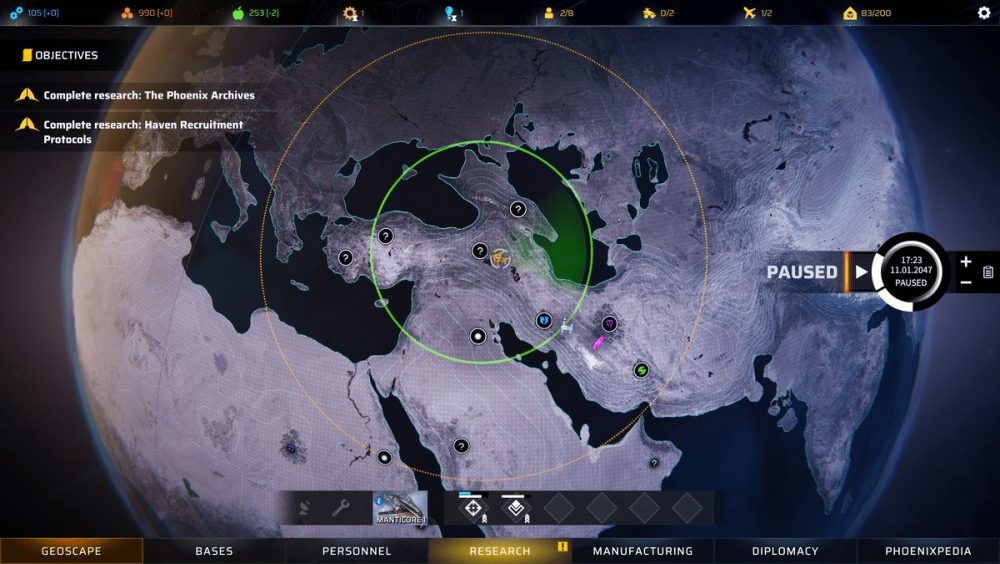
The most obvious improvement on XCom is the one most immediately visible – there is no percentage to hit calculation in combat. For anyone who has even played five minutes of XCom you will know the agony and the hilarity when your soldier is standing right next to an enemy and has a 99.8% chance to hit and misses his shot completely. That frustration is central to the meta-narrative that you build as you cajole and nurture your squad through the campaign, agonising over every move you make and decision to defend, retreat, advance or attack. Of course that same insane RNG driven chance to hit works both ways, though it often feels as if it doesn’t, as every XCom vet will have a story of how their favourite high ranking veteran soldier survived a certain death – just don’t expect it to be spoken about as often as the misses that went against the player.
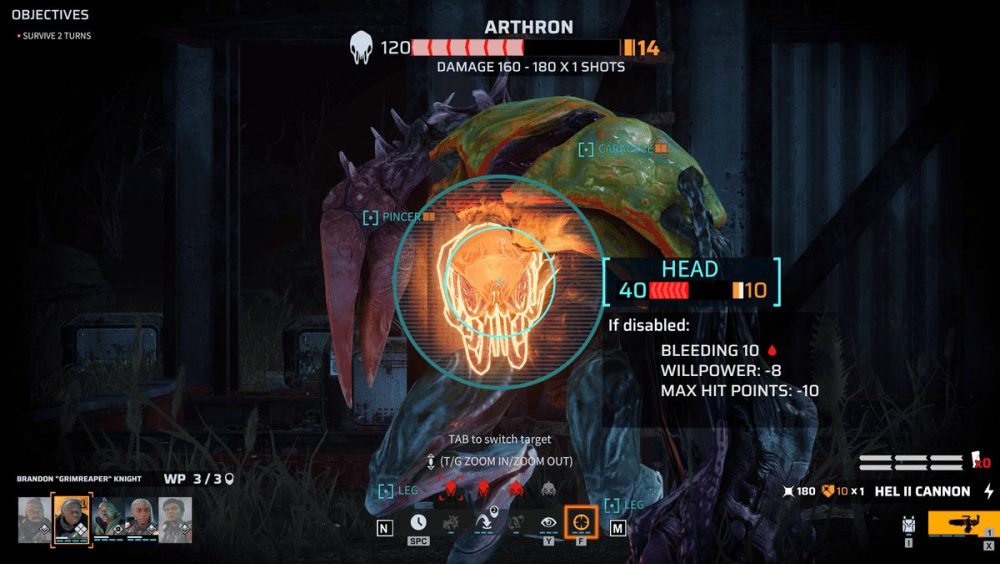
While at first the removal of this mechanic was welcomed, I missed the opportunity to craft these stories around my missions and the near death and survival by the skin of my teeth narrative that I could build. It just becomes a game of positioning and sight lines without the added spice of these impossible to miss misses. Of course, that does not mean that your squad is some sort of superhuman Hollywood SEAL Team where every shot taken is a perfect right between the eyes headshot. One of the most frustrating squaddies at your disposal is the Heavy Gunner who carries what amounts to a literal canon. I was so frustrated with him and his what seemed like one in ten hits, I started using him as an advance scout since his jump jet ability gives him near total access to the entire map. Sending him to high ground was the perfect way to gain line of sight on enemies far away from my squad allowing me to prepare. What kept me from dropping him immediately though was a one in a thousand attack where he landed a shot on one enemy who was within two tiles of another and managed to kill both immediately. A little of that meta-narrative came back as I imagined his squad mates all toasting him with whatever beer they brewed in the barracks as they recounted his heroics.
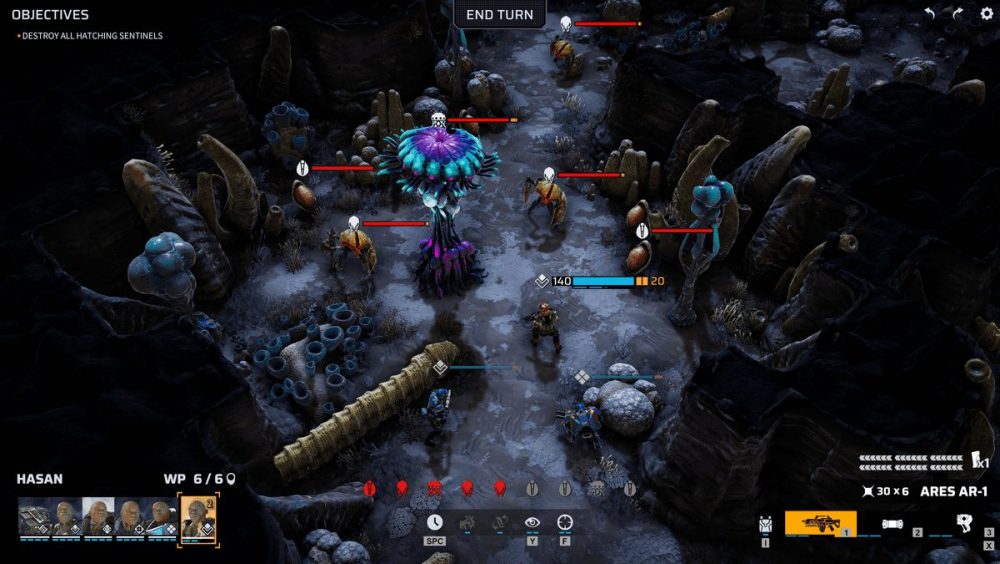
The other innovation, though one that I did not find that useful except against the bosses, is the ability to target specific limbs or weapons that an enemy is carrying. Initially I thought that if I target the legs or say the head, would cripple the target or outright kill them. Instead, I found that the application of whatever crippling effects may be generated in the background does not affect the game in any meaningful way. In my experience a target moved just as fast with a limb effectively blown off as they would with it and a unit listed as “head disabled” would not appear any less able to aim and shoot or even function than one with its head intact. The only effect that made any impact was targeting and destroying weapons. Doing so would render an enemy almost completely harmless, although they would have access to secondary weapons and grenades.
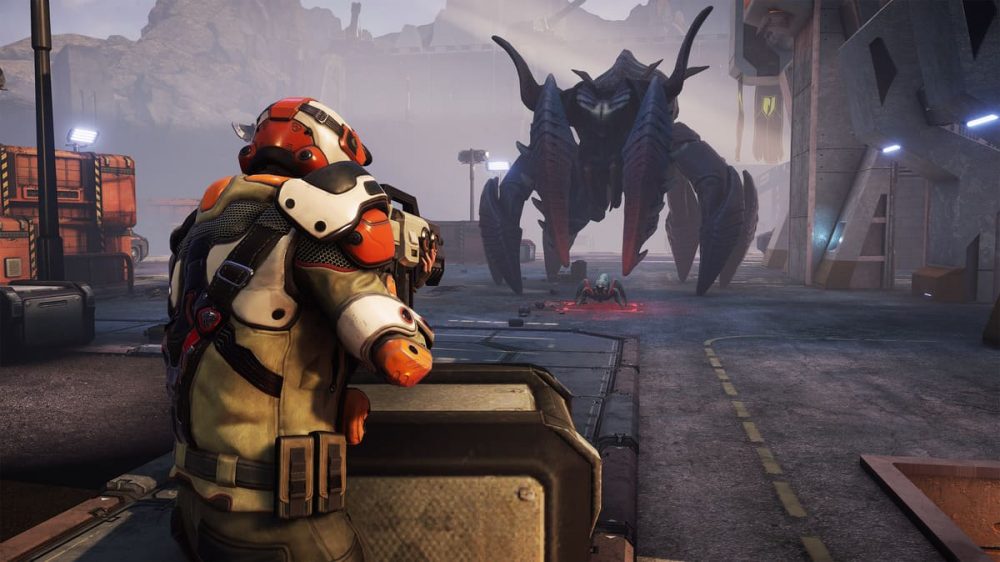
Of course, you can craft a squad that meets your playstyle as each member gains experience through battle allowing them to level up and add new skills and even a sub-class. This creates that sense of relationship between you as the tactical officer and player and the squad as death is permanent and losing that high level sniper who you have nurtured from rookie to veteran through multiple hours hurts you emotionally as well as in terms of effectiveness. The skill tree is simple and if you manage to get enough of the squad to high rank you should have the team at an almost OP level for the late game.

Where the changes to combat are welcome, if somewhat sterile, the changes to the base building and exploration game are far more interesting and welcome. Firstly, you will have to build various rooms and labs in order to move along the tech tree to upgrade your equipment. Much like XCom new tech is either scavenged or harvested via autopsies of enemy units. Unlike XCom you will have access to more than one base around the world allowing you to create a cybernetics base and a training base should you so desire to specialise. I preferred to not specialise just in case a base was damaged or destroyed. The one addition I genuinely liked is the addition of a Total War-esque diplomacy and faction system. In this post-apocalyptic Earth survivors have banded together and formed whole new societies. There is a faction that sees man’s evolution along the crab-like path that most of humanity has mutated into as the only way to survive. Another believes that conversion to cybernetic life, a mentally unstable Borg really, is the only way for humanity to survive. Another believes in strict law and order. Each faction will be encountered by your team as you explore the world and as you make simple choices ranging from fighting on their behalf, to actively stealing or sabotaging their colonies you will gain and lose reputation and thus access to certain tech upgrades, recruits and possible resources that are so necessary to continue to grow you base and successfully defeat the enemy. This diplomacy leaves you pausing as you try and think through all the ramifications of your decisions and whether your goal can be met by increasing or decreasing your reputation.
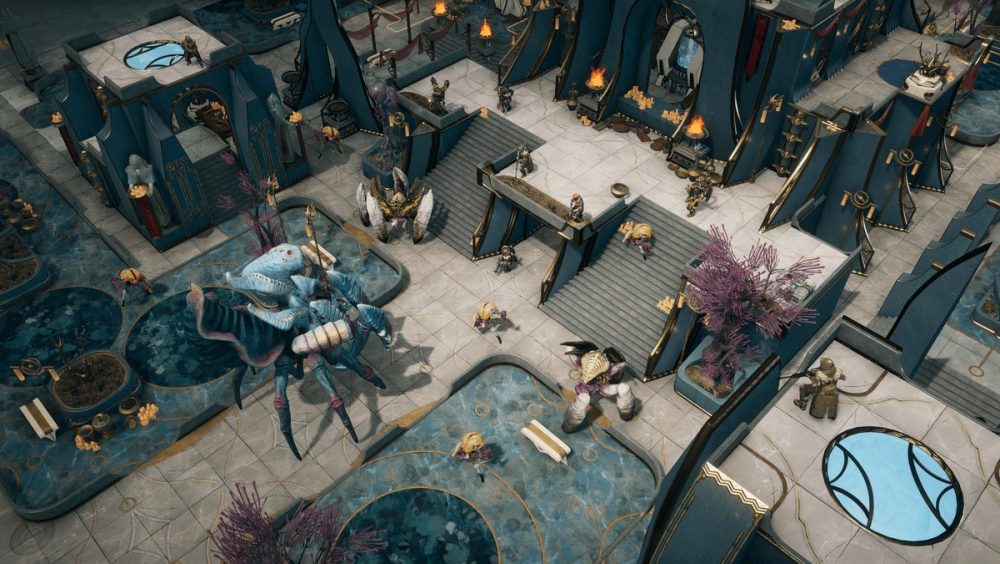
The game was developed in Unity, that ubiquitous engine that is used from games designed for mobile all the way to AAA PC and console games. While many developers may scoff at the engine and its capabilities, there is no denying that it is powerful in its scalability. While the engine may be a one that is not well regarded, the game itself does not suffer visually. Given that most of it takes place in an isometric remote view it is still remarkably detailed and pretty. From the ruins of various scavenger sites to some fairly high tech and modern cities that you will operate in, the game is attractive and the character models when you zoom in to target a specific body part are detailed up close and when pulled back it is easy enough to ID the different units by class.
Mission variety, like with most of these types of games boils down to defend this, find that or simply kill everything on the map. And as the game wears on this lack of variety does make the game somewhat tedious. Add on the fact that the unwelcome countdown to oblivion is also present, though nowhere near as overbearing as the one in XCom 2, and you have a recipe for fatigue, yet keep playing just to avoid the dreaded no win scenario. Maybe a smaller game would avoid the tedium, but then shorter campaigns are not what fans of this genre want.
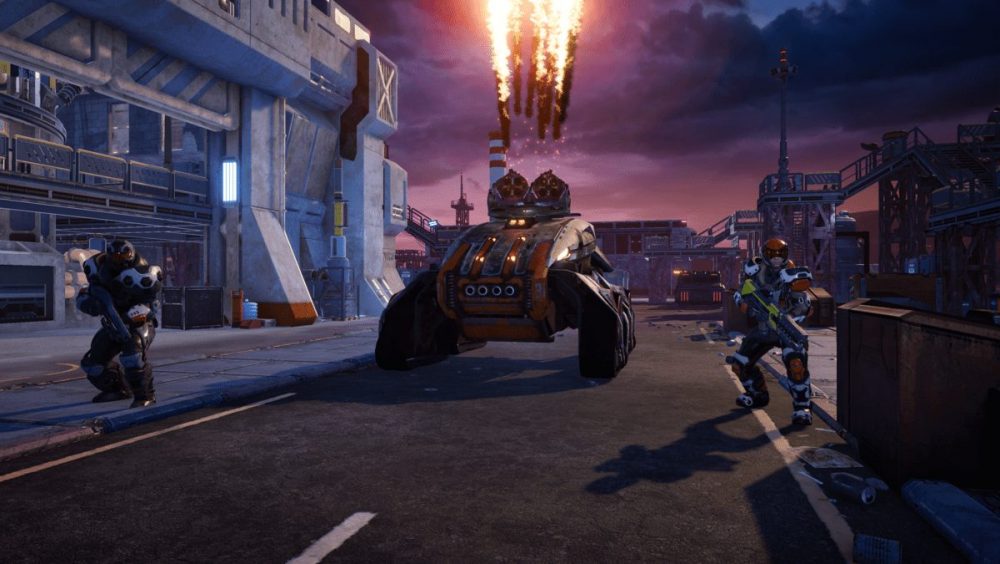
One area where the game suffers is in the load times. Currently, using a well-known and developed engine like Unity and running the game on a laptop sporting an older, yet still powerful i7-7700HQ, with 16GHB of RAM and a GTX1070, the load times are not acceptable. Loading into maps takes at least a minute during which you stare at a splash screen. Following that you will see the cutscene of your dropship flying, why this is not used as a loading screen is beyond me, but at least you can skip that scene when it starts.
Another area of irritation is the load out screen for your soldiers, before deploying you can inspect your team and alter loadout or squad members. The screen will show that weapons are not loaded, or ready slots not filled. The latter is easy enough to fix in the loadout screen, but the reloading so that you do not waste a turn in battle does not seem to be an option. Having played through the game I have not yet found a way to reload your gun on this screen.

The soundtrack is passable, nothing memorable in score or sound design. The squad members sometimes sound alike, making it difficult to determine by that alone who you have selected and I sometime found myself due to being in a rush and the sameness of sound design giving the right order to the wrong unit. Character customisation, swapping colours for classes and having a variant colour within the same class if you have several assault or sniper units, does help with this, but sadly the deep customisation of XCom is nowhere to be seen.
Overall Phoenix Point is good entry in the ever-growing tactical squad-based genre and the new mechanics show promise while pointing the way forward for others to follow. XCom has nothing to worry about just yet, but this game shows that if they rest on their laurels, they will be overtaken and one of the innovators in the genre just may be the one to take the lead.
Grab the game here https://phoenixpoint.info/
Phoenix Point is Developed and published by Snapshot Games
Phoenix Point is on PC and is coming to PlayStation 4 and Xbox One
Freelance Author: Lynley James
Enjoy the review? want to read more of our reviews? then click right here to be whisked away to the realm of our opinions.
Phoenix Point

Phoenix Point is a strategy video game featuring a turn-based tactics system that is developed by Bulgaria-based independent developer Snapshot Games.
Product Currency: GBP
Product Price: 35.99
Product In Stock: SoldOut
3.5

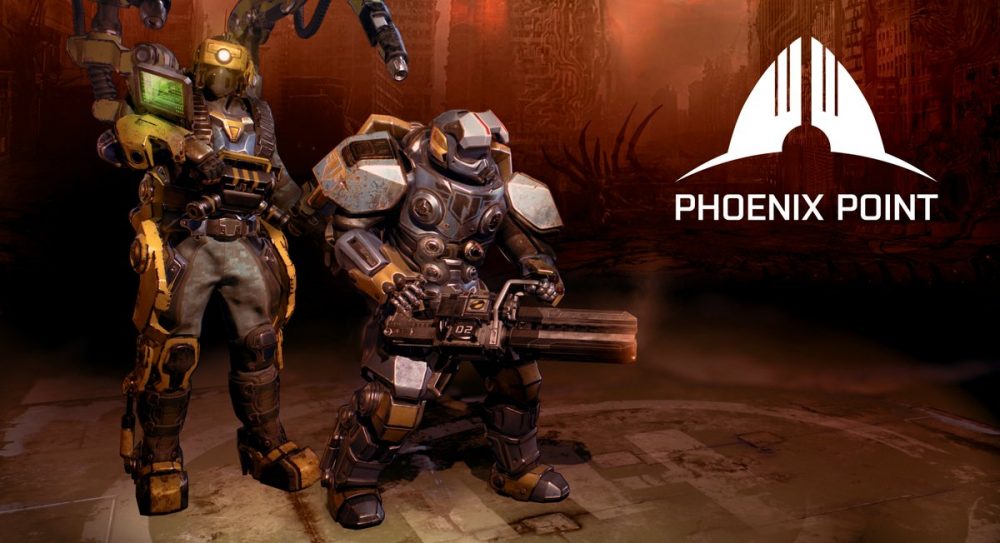






You must be logged in to post a comment.